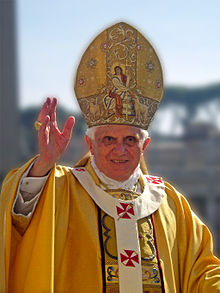
Ultramontanism is a clerical political conception within the Catholic Church that places strong emphasis on the prerogatives and powers of the Pope. It contrasts with Gallicanism, the belief that popular civil authority—often represented by the monarch's or state's authority—over the Church is comparable to that of the Pope.

Pope Benedict XVI was the head of the Catholic Church and sovereign of the Vatican City State from 19 April 2005 until his resignation on 28 February 2013. Benedict's election as pope occurred in the 2005 papal conclave that followed the death of Pope John Paul II. Benedict chose to be known by the title "pope emeritus" upon his resignation, and he retained this title until his death in 2022.
Full communion is a communion or relationship of full agreement among different Christian denominations that share certain essential principles of Christian theology. Views vary among denominations on exactly what constitutes full communion, but typically when two or more denominations are in full communion it enables services and celebrations, such as the Eucharist, to be shared among congregants or clergy of any of them with the full approval of each.
The infallibility of the Church is the belief that the Holy Spirit preserves the Christian Church from errors that would contradict its essential doctrines. It is related to, but not the same as, indefectibility, that is, "she remains and will remain the Institution of Salvation, founded by Christ, until the end of the world." The doctrine of infallibility is premised on the authority Jesus granted to the apostles to "bind and loose" and in particular the promises to Peter in regard to papal infallibility.

Walter Kasper is a German Catholic cardinal and theologian. He is President Emeritus of the Pontifical Council for Promoting Christian Unity, having served as its president from 2001 to 2010.

Bernard Tissier de Mallerais is a French Traditionalist bishop of the Society of Saint Pius X.
The Pastoral Provision is a set of practices and norms in the Catholic Church in the United States, by which bishops are authorized to provide spiritual care for Catholics converting from the Anglican tradition, by establishing parishes for them and ordaining priests from among them. The provision provides a way for individuals to become priests in territorial dioceses, even after Pope Benedict XVI's Anglicanorum Coetibus proclamation established the Personal Ordinariates, a non-diocesan mechanism for former Anglicans to join the Church.
The Pontifical Commission Ecclesia Dei was a commission of the Catholic Church established by Pope John Paul II's motu proprioEcclesia Dei of 2 July 1988 for the care of those former followers of Archbishop Marcel Lefebvre who broke with him as a result of his consecration of four priests of his Society of St. Pius X as bishops on 30 June 1988, an act that the Holy See deemed illicit and a schismatic act. It was also tasked with trying to return to full communion with the Holy See those traditionalist Catholics who are in a state of separation, of whom the Society of Saint Pius X (SSPX) is foremost, and of helping to satisfy just aspirations of people unconnected with these groups who want to keep alive the pre-1970 Roman Rite liturgy.

The Traditional Anglican Church (TAC), formerly the Traditional Anglican Communion, is an international church consisting of national provinces in the continuing Anglican movement, independent of the Anglican Communion and the Archbishop of Canterbury. The TAC upholds the theological doctrines of the Affirmation of St. Louis. Each of the respective jurisdictions utilizes a traditional Book of Common Prayer deemed to be free of theological deviation. Most parishioners of these churches would be described as being traditional Prayer Book Anglicans in their theology and liturgical practice. Some Anglo-Catholic parishes use the Anglican Missal in their liturgies. The TAC is governed by a college of bishops from across the church and headed by an elected primate.
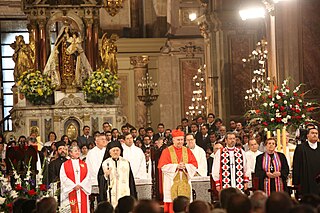
The Catholic Church has engaged in the modern ecumenical movement especially since the Second Vatican Council (1962-1965) and the issuing of the decree Unitatis redintegratio and the declaration Dignitatis humanae. It was at the Council that the Pontifical Council for Promoting Christian Unity was created. Those outside of the Catholic Church were categorised as heretics or schismatics, but in many contexts today, in order to avoid offence, the euphemism "separated brethren" is used.
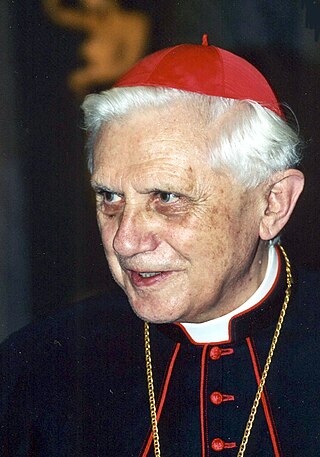
Joseph Ratzinger (1927–2022) was named by Pope John Paul II on 25 November 1981 as prefect of the Congregation for the Doctrine of the Faith, formerly known as the Holy Office and, especially around the 16th century, as the Roman Inquisition.
The Écône consecrations were a set of episcopal consecrations that took place in Écône, Switzerland, on 30 June 1988. They were performed by Catholic Archbishop Marcel Lefebvre and Bishop Antonio de Castro Mayer, and the bishops who were consecrated were four priests of Lefebvre's Society of Saint Pius X (SSPX). The consecrations, performed against the explicit orders of Pope John Paul II, represented a milestone in the troubled relationship of Lefebvre and the SSPX with the Church leadership. The Holy See's Congregation for Bishops issued a decree signed by its Prefect Cardinal Bernardin Gantin declaring that Lefebvre had incurred automatic excommunication by consecrating the bishops without papal consent, thus putting himself and his followers in schism.
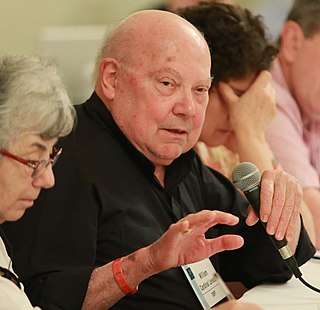
William Joseph Levada was an American cardinal of the Catholic Church. From May 2005 until June 2012, he served as Prefect of the Congregation for the Doctrine of the Faith under Pope Benedict XVI; he was the highest ranking American in the Roman Curia. He was previously the Archbishop of Portland in Oregon from 1986 to 1995, and then Archbishop of San Francisco from 1995 to 2005. While serving as archbishop, he was criticized for covering up sexual abuse by priests within his jurisdiction. Levada was created a cardinal in 2006 by Benedict XVI.
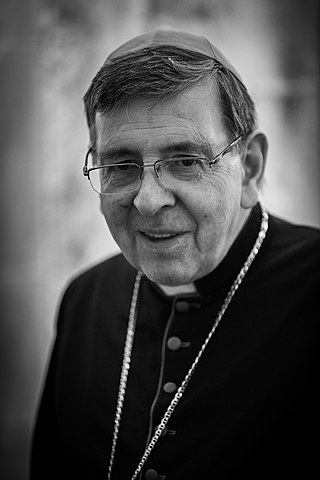
Kurt Koch is a Swiss prelate of the Catholic Church. He has been a cardinal since November 2010 and president of the Pontifical Council for Promoting Christian Unity since 1 July 2010. He was the bishop of Basel from 1996 until 2010.
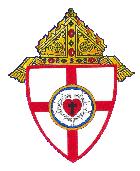
The Augustana Catholic Church (ACC), formerly the Anglo-Lutheran Catholic Church (ALCC) and the Evangelical Community Church-Lutheran (ECCL), was an American church in the Lutheran Evangelical Catholic tradition.
After the Second Vatican Council Pope Paul VI contributed in two ways to the continued growth of ecumenism and inter-Christian dialogue. The separated brothers and sisters, as he called them, were not able to contribute to the Second Vatican Council as invited observers. After the Council, many of them took initiative to seek out their Catholic counterparts and the Pope in Rome, who welcomed such visits.
Anglican–Roman Catholic dialogue is the historical communication between the Anglican Communion and the Roman Catholic Church, through their ecumenical relations. These were notably shaped subsequent to the Second Vatican Council (1962–1965).
Sister churches was a term used in 20th-century ecclesiology to describe ecumenical relations between the Roman Catholic Church and the Eastern Orthodox Churches, and more rarely and unofficially, between the Roman Catholic Church and the Anglican communion. The Catholic Church has since called on theologians to avoid the term, clarifying that "one cannot properly say that the Catholic Church is 'sister' of a particular Church or group of Churches. This is not merely a question of terminology, but above all of respecting a basic truth of the Catholic faith: that of the unicity [uniqueness] of the [Catholic Church]." The term is also currently used among Protestants to refer to different denominations of the same religious tradition.
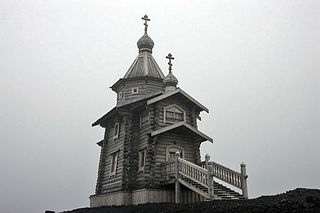
Christianity in the 21st century is characterized by the pursuit of Church unity and the continued resistance to persecution and secularization.
A personal ordinariate for former Anglicans, shortened as personal ordinariate or Anglican ordinariate, is an ordinariate, a canonical structure within the Catholic Church established in order to enable "groups of Anglicans" and Methodists to join the Catholic Church while preserving elements of their liturgical and spiritual patrimony.
